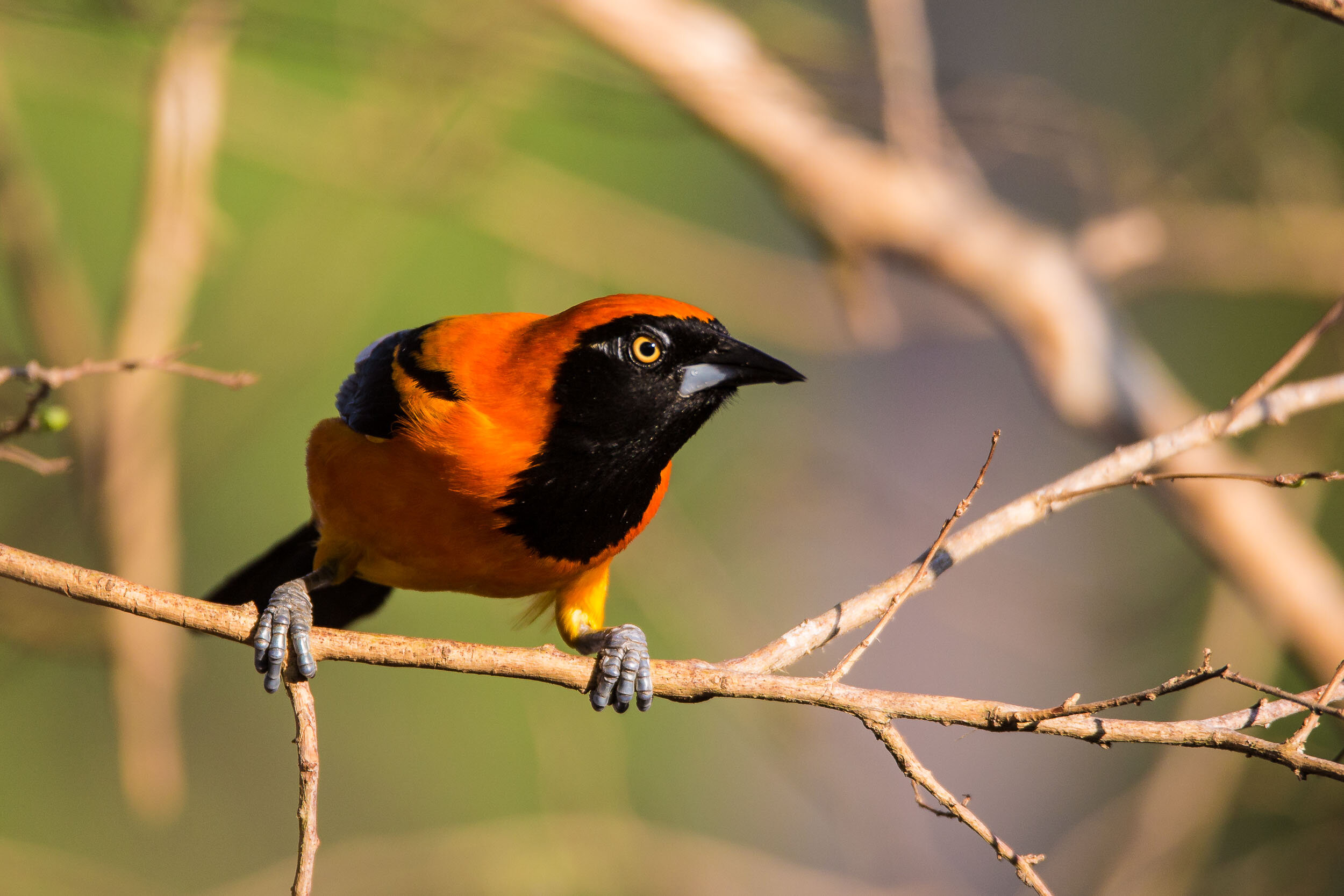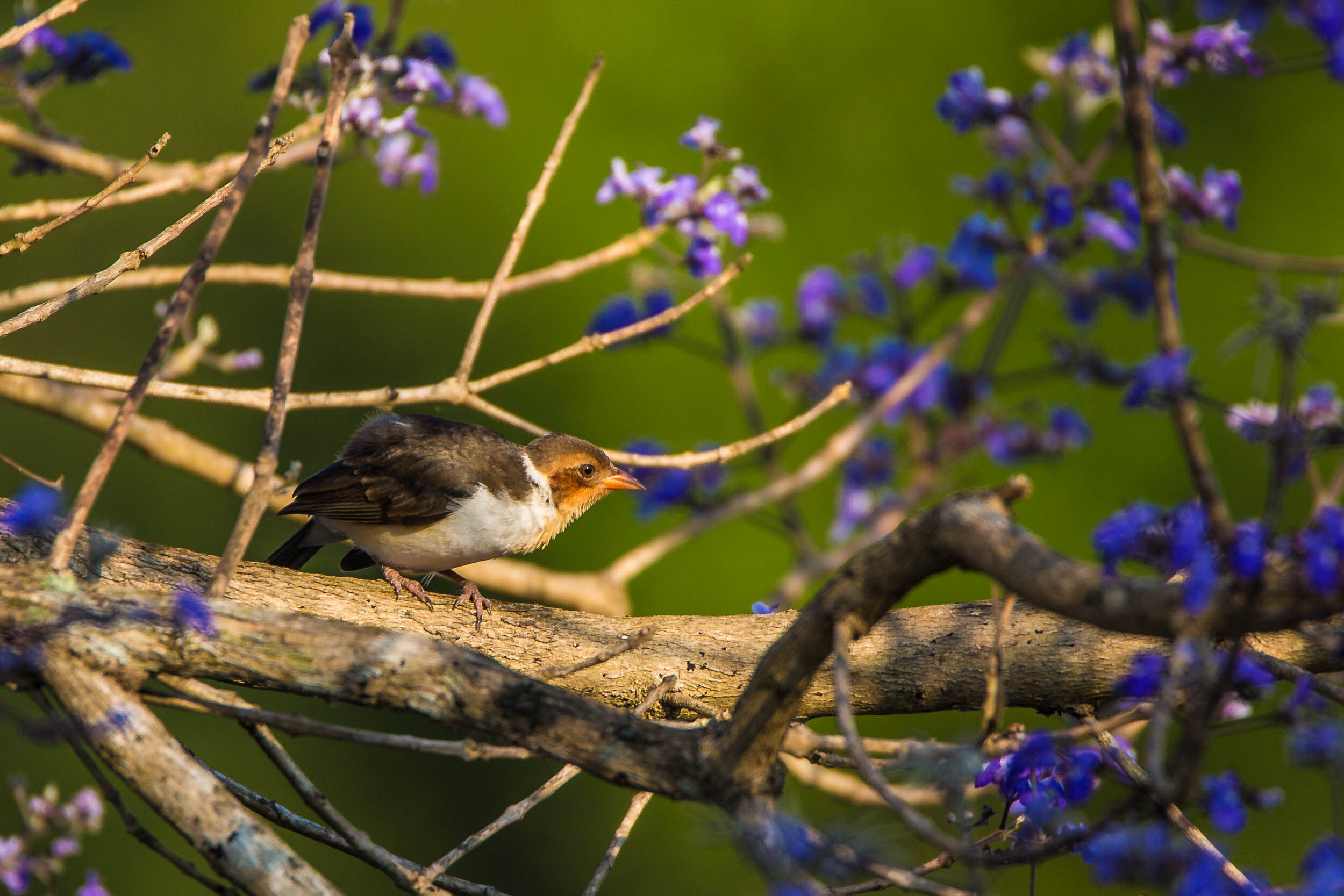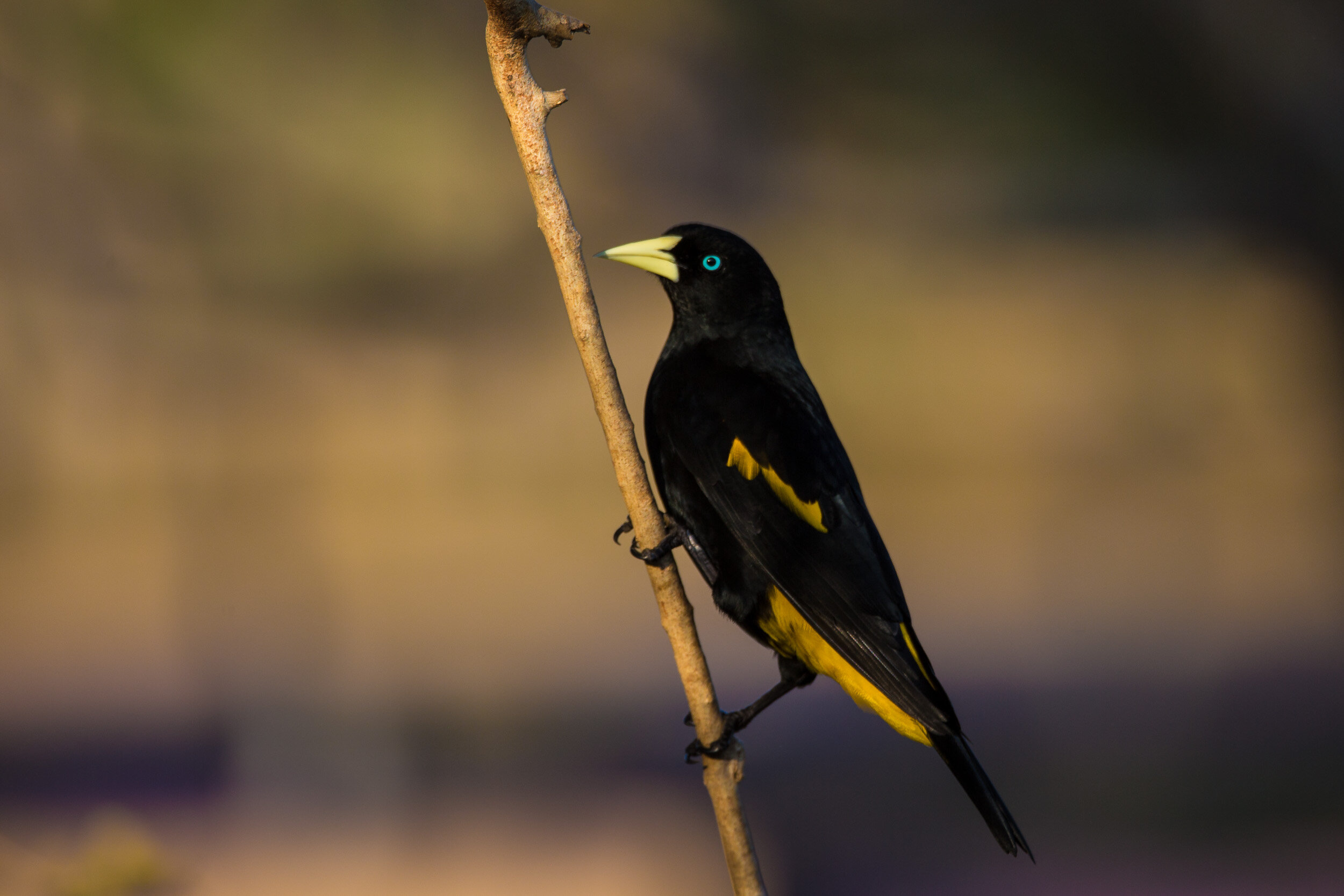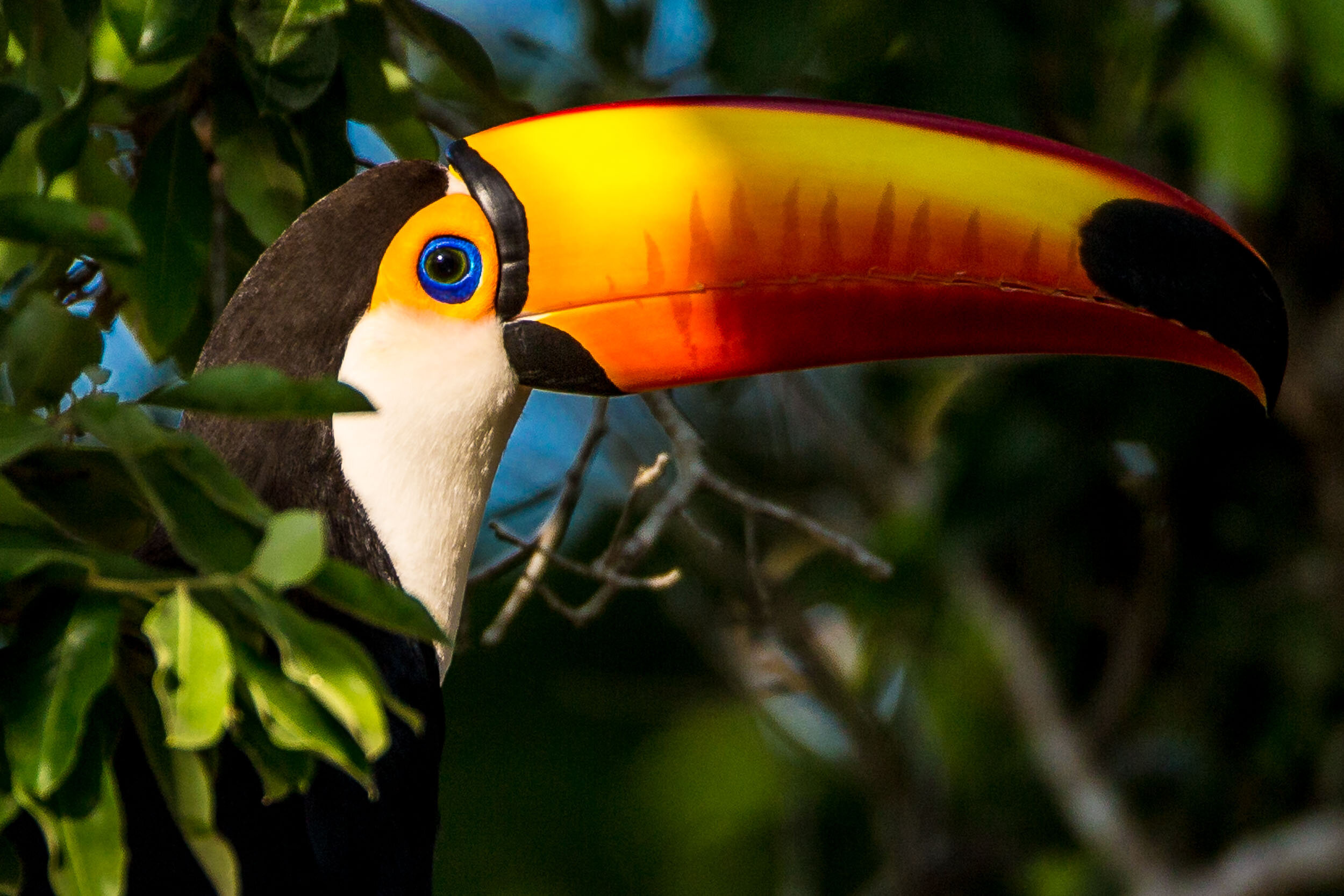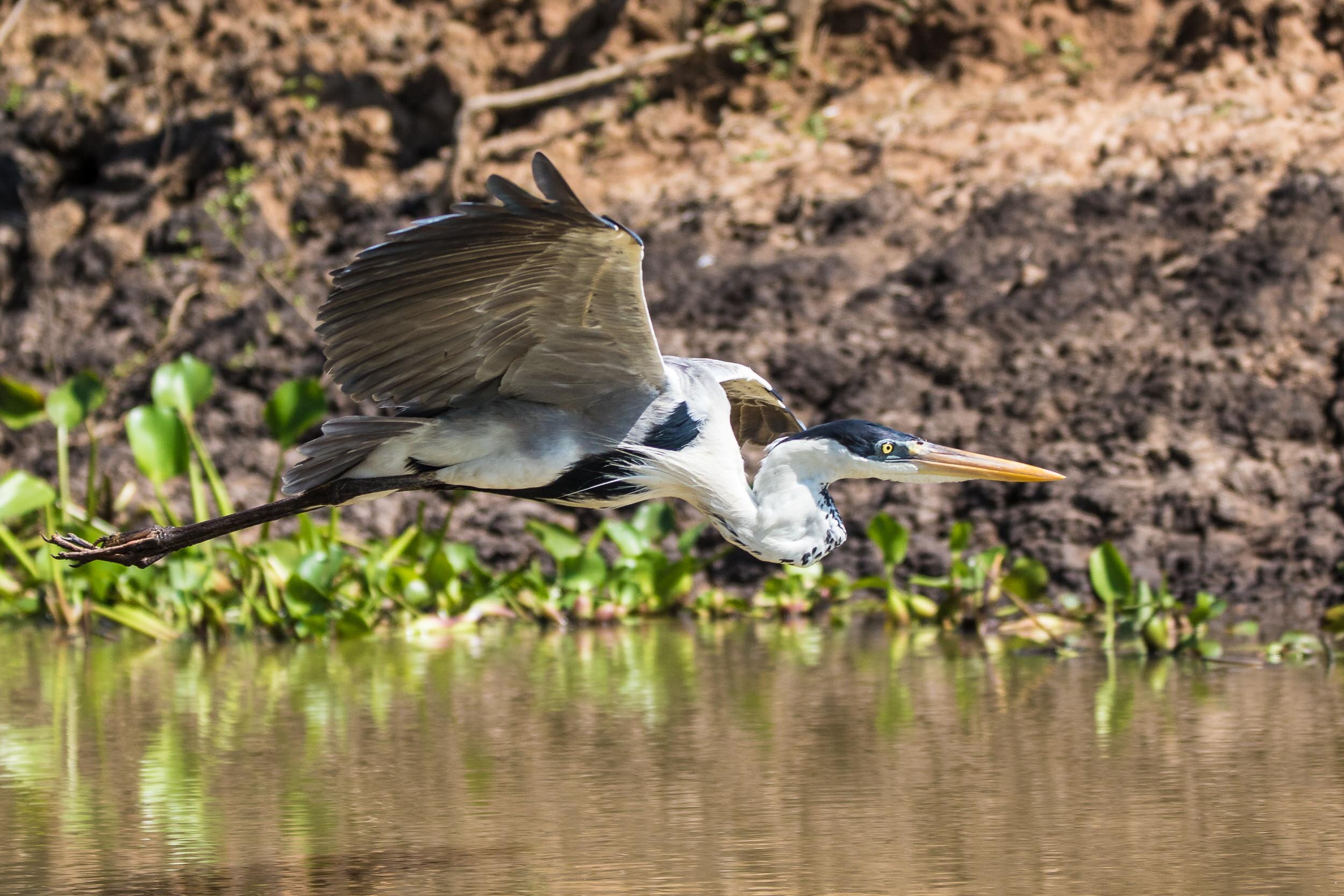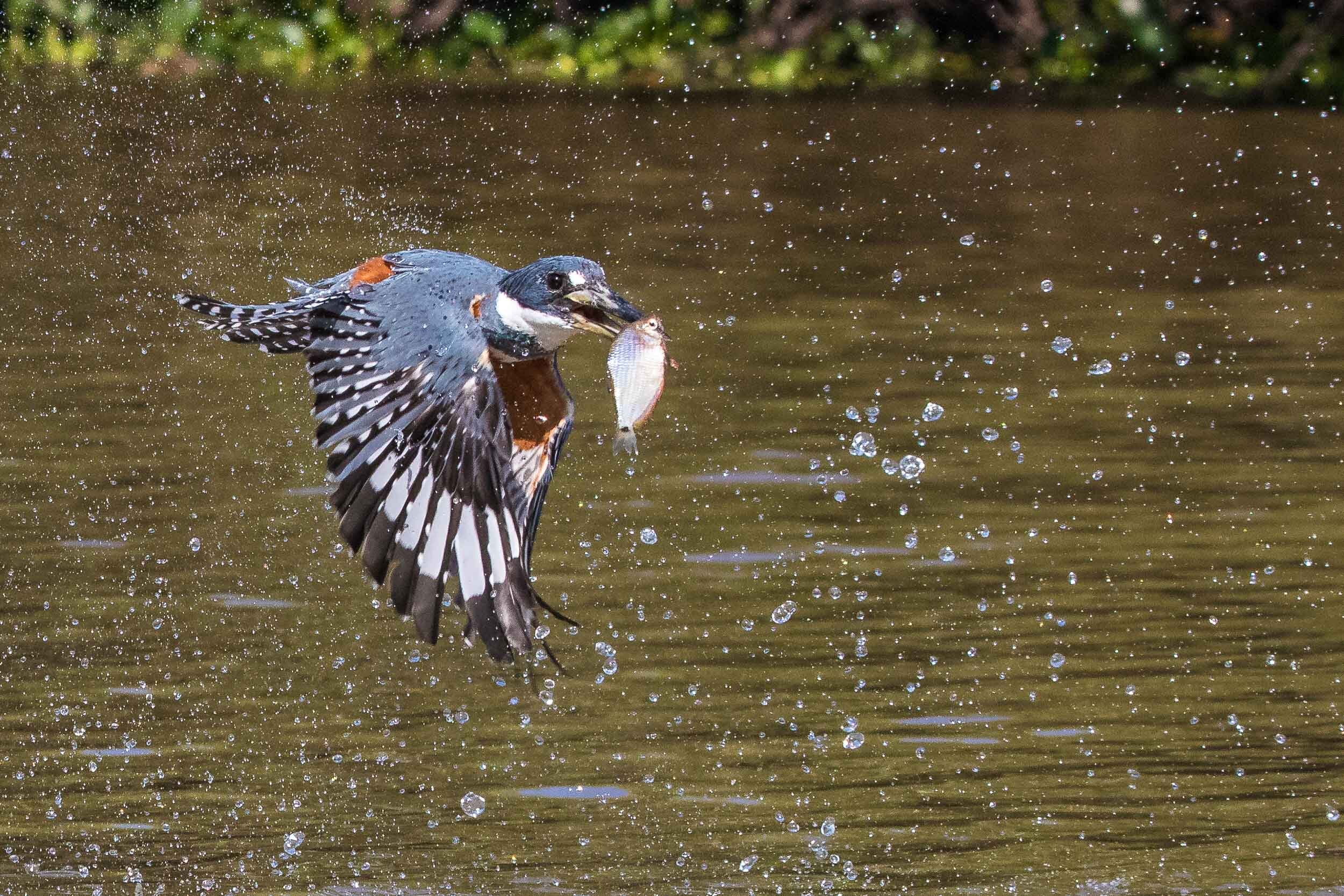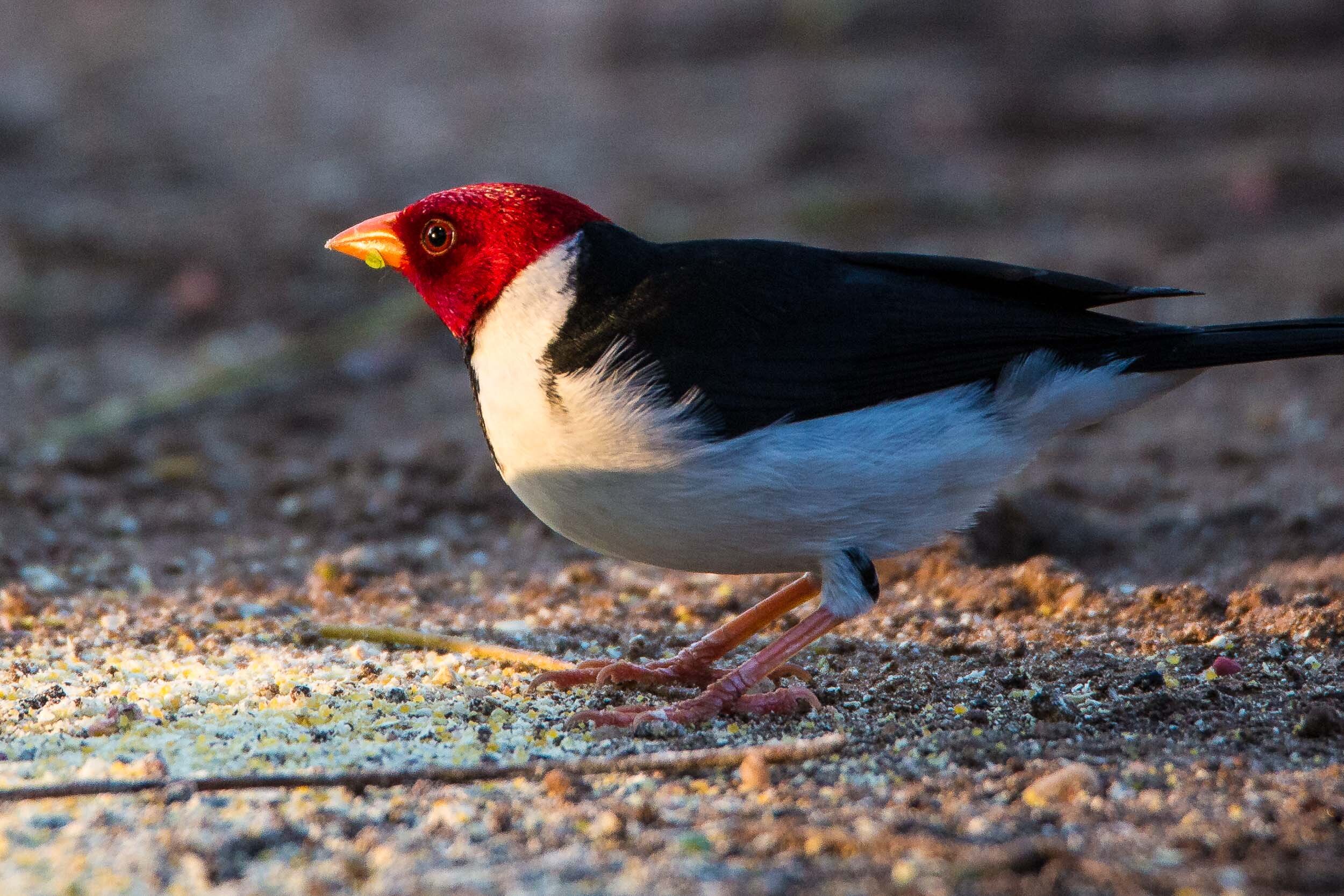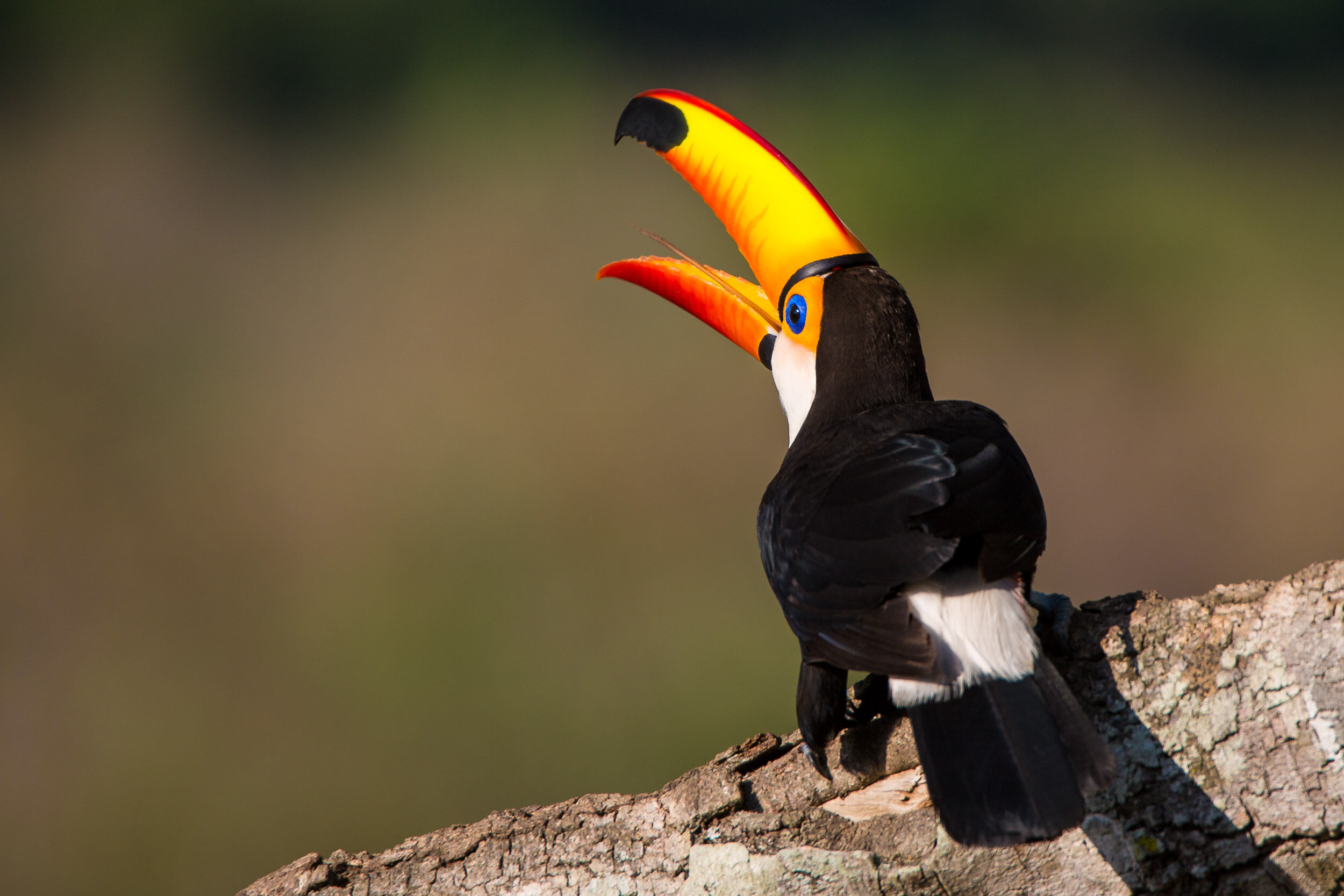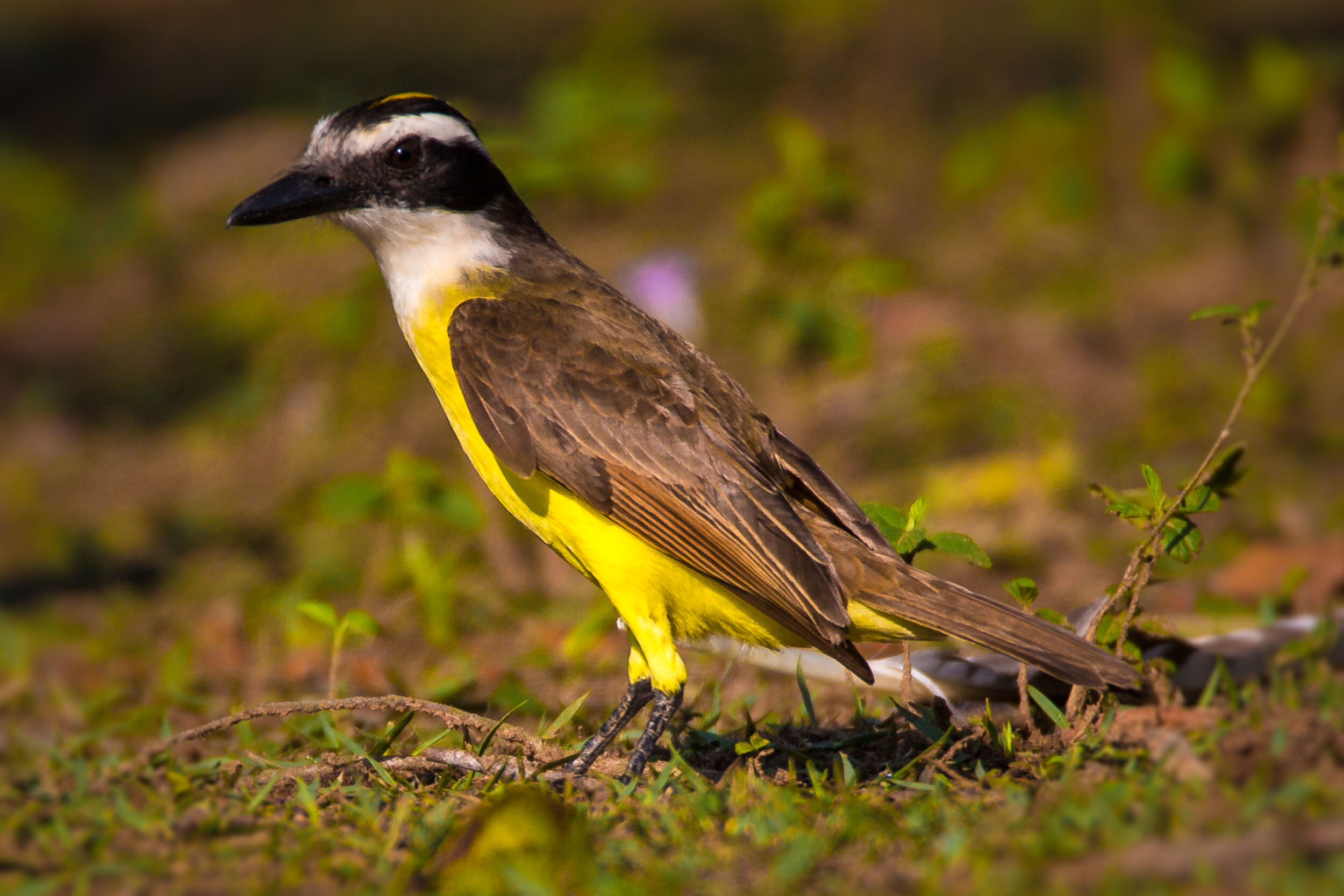SouthWild Pantanal Lodge, Brazil (Part 2)
In this concluding post on SouthWild Pantanal Lodge, we delve into the real reason you should visit - the wildlife and the activities, starting first and foremost with the rare and unique opportunity to see ocelots in the wild…
Ocelot Hide
When Fazenda Santa Teresa was a ranch rather than an eco-lodge, it was noted that the lush forest near the homestead was home to an unusually high number of ocelots. SouthWild subsequently studied the behaviour of the ocelots over several years, ascertaining their preferred routes through the forest, and then built a hide at one of the focal points of their activity. Over time, the resident ocelots have become habituated to humans, and the lodge does excursions to the ocelot hide at sunset each evening.
The local female ocelot, named Ana
At this point in time, it probably does need to be pointed out that the ocelot hide is not a particularly authentic “wildlife” experience. Many readers will be familiar with hides in the African wilderness, well hidden amongst camouflage and with thin slit windows for viewing the animals. The ocelot hide at SouthWild Pantanal Lodge is more like a mini-grandstand than a hide! Inside a small fenced enclosure (the fencing is in case a jaguar rather than an ocelot comes to visit!), there are three tiers of stadium-style seating. The front of the grandstand is open, and while at one time there may have been fabric curtains to hide the audience, the ocelots are now obviously habituated enough that the presence of humans is no deterrent, and only rag remnants of the original curtains remain. The clearing in front of the grandstand is well illuminated with floodlights and spotlights.
It must also be advised that the ocelots are encouraged to visit the hide by feeding them. Each evening, once the guests are seated, the lodge staff place chicken feet and other treats on the trees and logs in front of the grandstand. And so the animals are enticed to come. This may be disappointing to some wildlife purists, or feel like cheating to some wildlife photographers, and this is understandable. But it is reassuring that although an ocelot comes most nights, they do not come every night. And it is rarely the same ocelot that visits for more than one night in a row. Which suggests that while the ocelots are happy to accept the treats at the hide, they are not dependent on this feeding, and are otherwise independently hunting and feeding in the wild, as they should.
We visited the ocelot hide both nights of our stay at SouthWild Pantanal Lodge, and were lucky enough to see ocelots on both occasions – the somewhat scrawny adolescent male Cesar on the first night, and the lustrous female Ana on the second night – a picture of health who’s two young cubs were likely to be hiding nearby. Both stayed at the hide for about 20-30 minutes, nonchalantly moving amongst the trees and along the fallen logs, yawning and stretching and munching on the scattered treats.
To visit the hide, interested guests rendezvous at the lodge at the appointed time just before sunset, and walk the short distance (less than a ten minute walk) to the ocelot hide. We recommend taking a seat on the ground level, for front-row views that are at eye-level with the animals. We also recommend a thorough dousing in mosquito repellent, in addition to long sleeves, long pants and a hat or balaclava, not for sun protection, but for some level of defence against the myriad of mosquitos and annoyingly-persistent insects that are drawn to the spotlights.
From a photography perspective, the distance from the hide to the ocelots is about six to ten metres. We utilised zooms of 70-200, 100-400 and 150-600, which worked very well for the distance, with the majority of images taken at between 100 and 200 zoom. While there are spotlights illuminating the area, it is still shadowy and dark, and strategies for low-light photography need to be employed. However, a flash is not recommended, and we would actively discourage using one for the sake of the animals (and your fellow guests).
Instead, ensure your camera is steady on one of the provided beanbags or bring a monopod, open your lens to the maximum aperture, and play with shutter speeds and ISO to work out the best balance of sharpness without too much noise. In our experience, it is hard to get a sharp photo of a wild cat with a shutter speed anything slower than 1/250. This frequently resulted in ISOs of 5000-12800. We ISO-limited to 12800, as images with higher ISOs were generally too noisy to be usable, but the better images were definitely those obtained when the ocelot ventured into the slightly brighter light, with ISOs of 3200-5000. We were fortunate that on both occasions, the visiting ocelot stayed long enough that it was possible to check our images during the shoot and play with a range of settings. It is also why it is great to visit twice if the opportunity presents itself, as our photos on the second night were definitely better than the first.

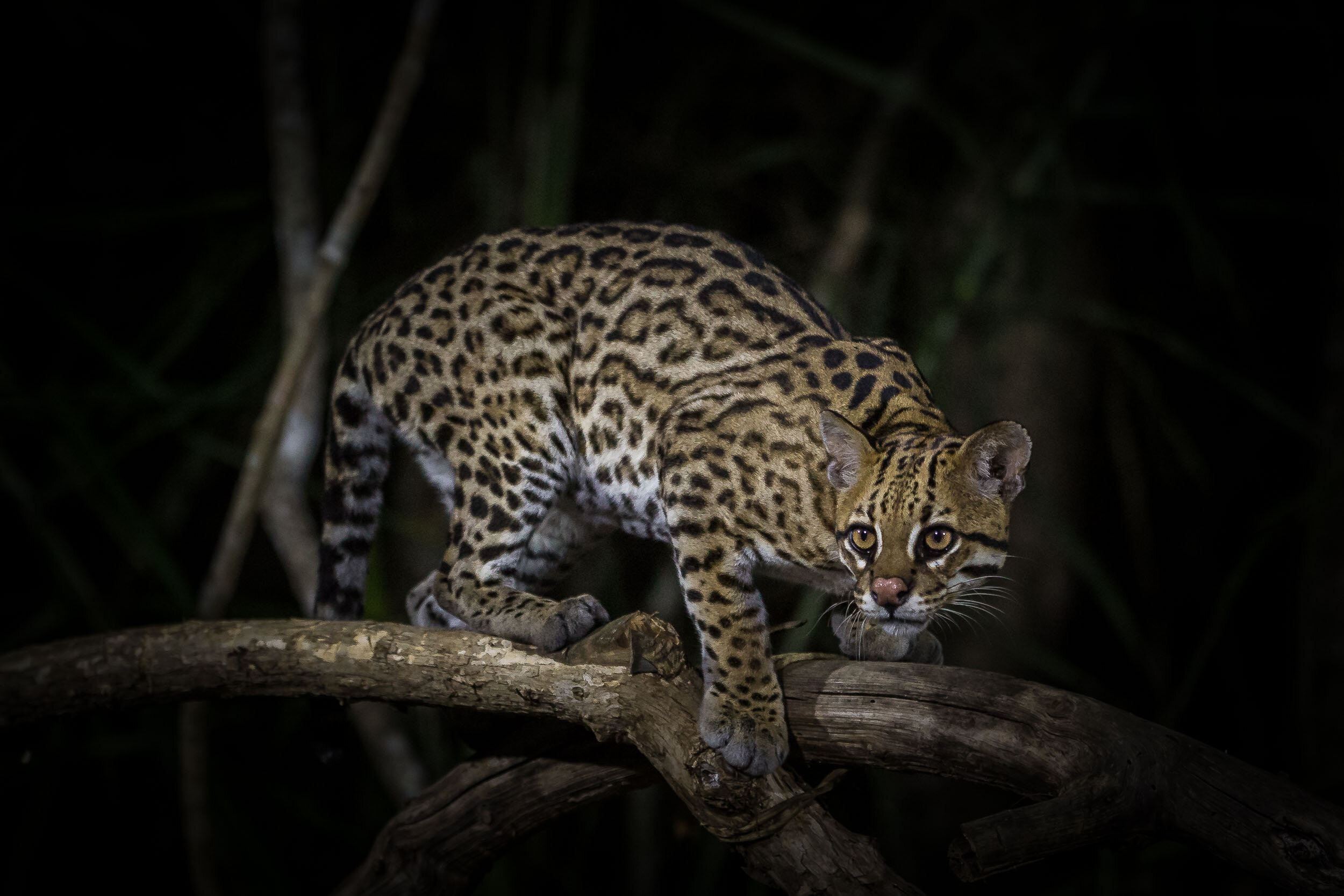
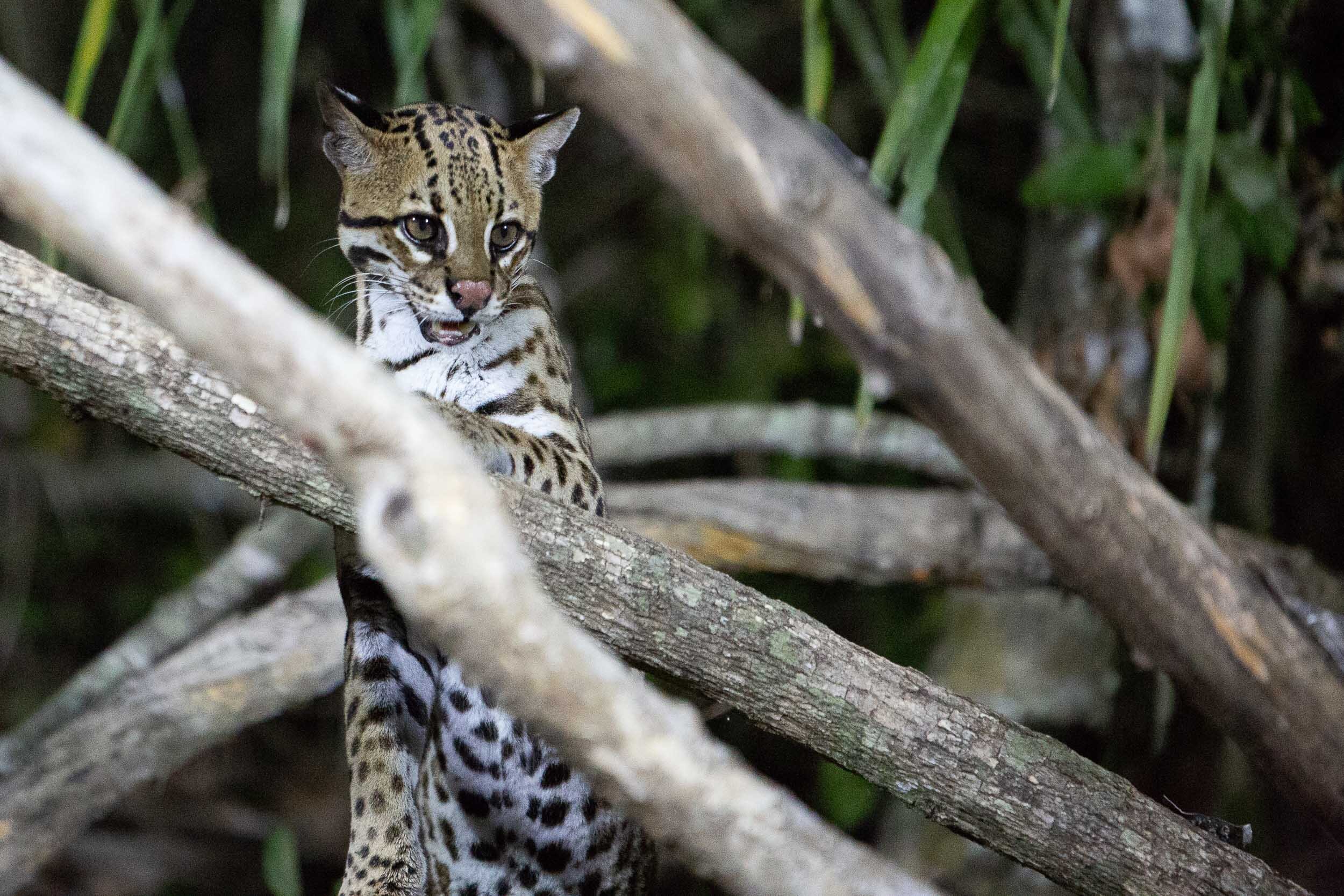
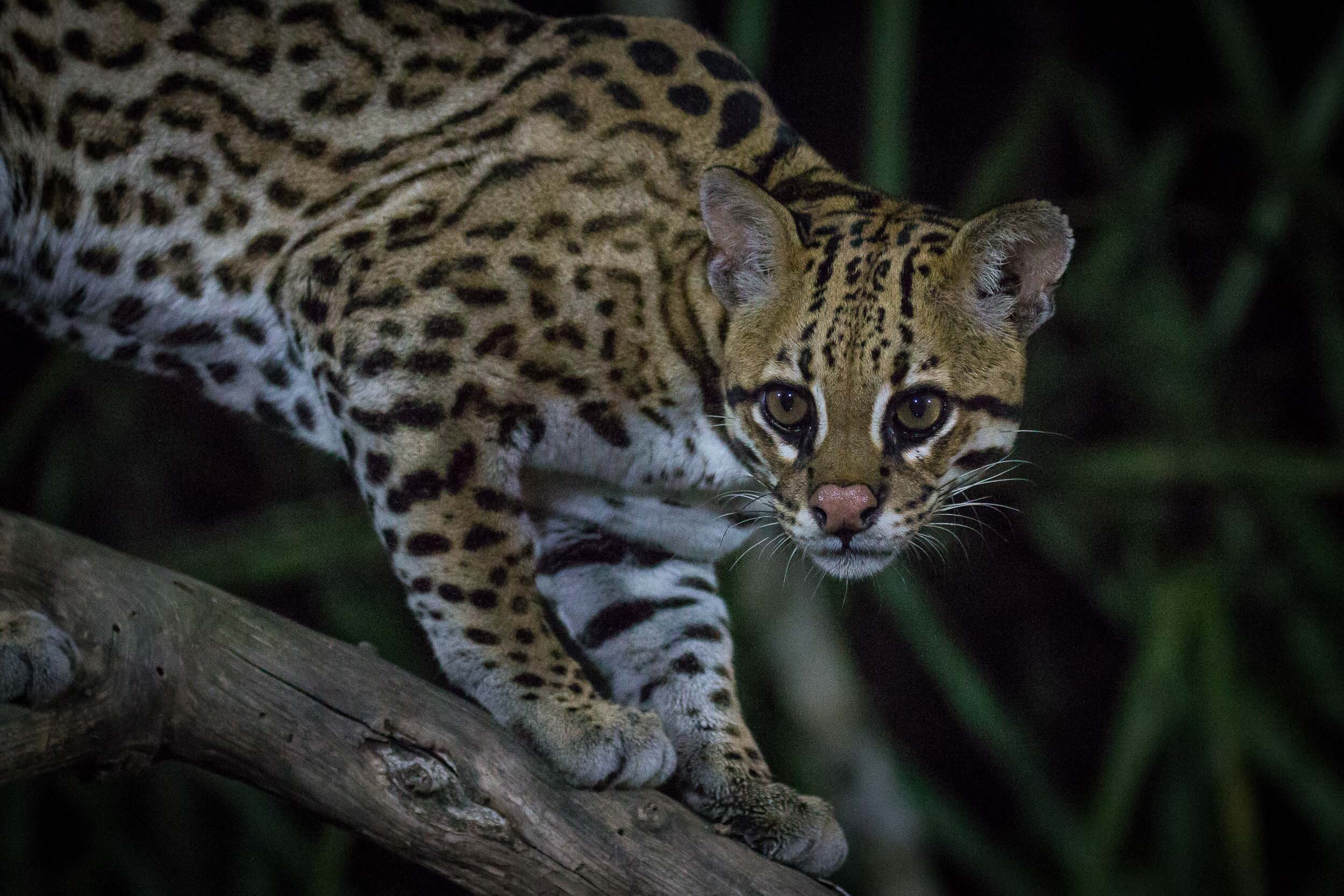
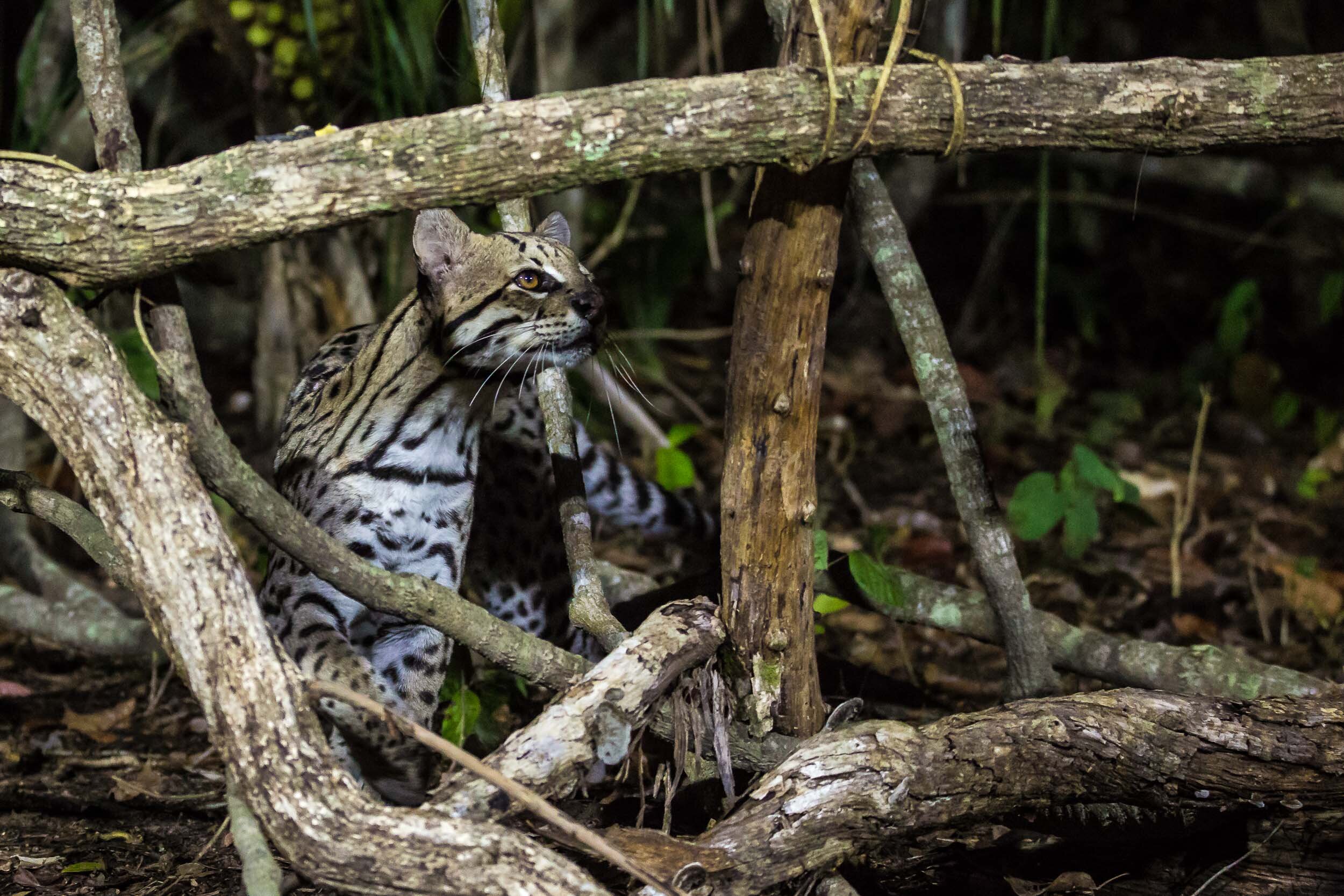
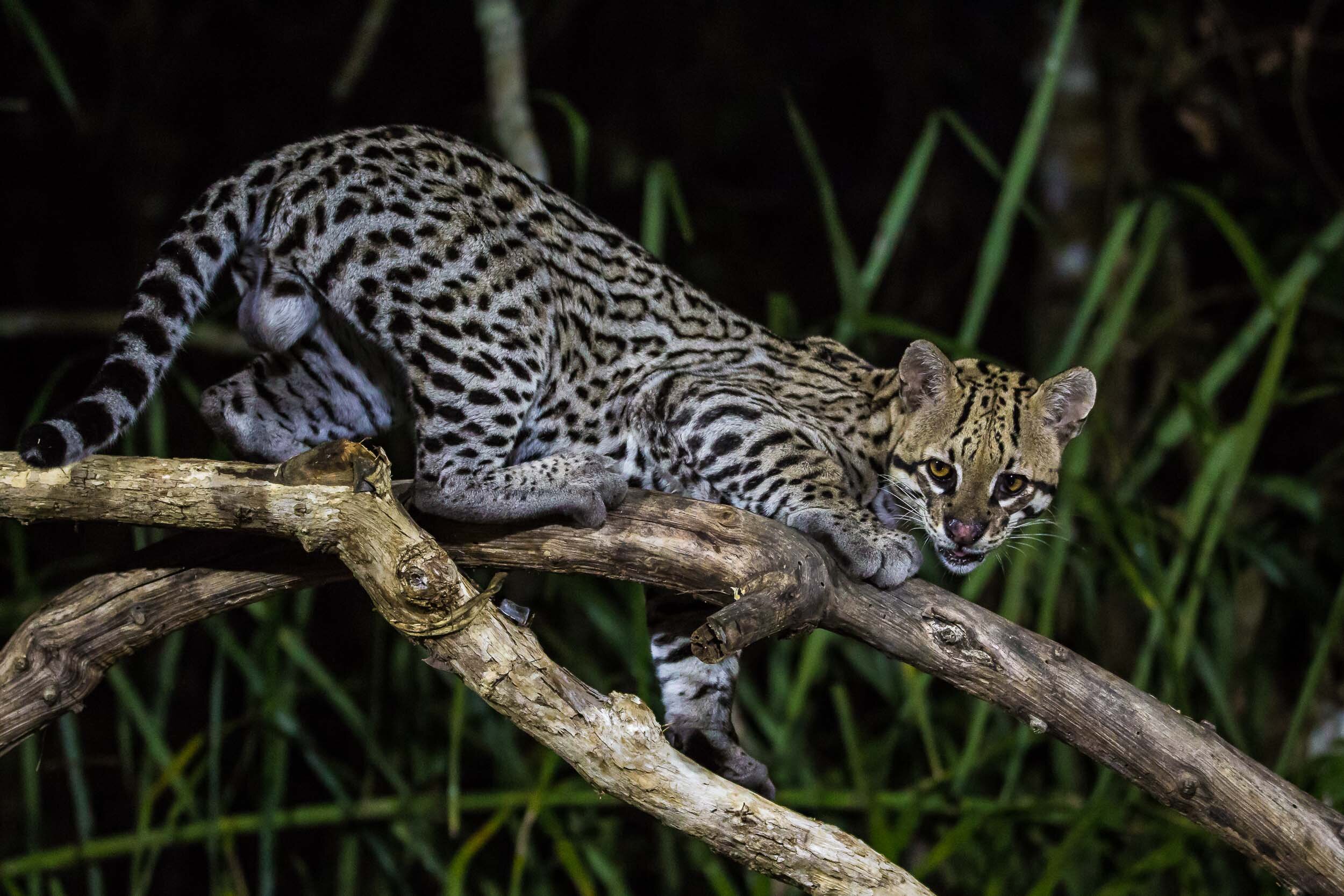
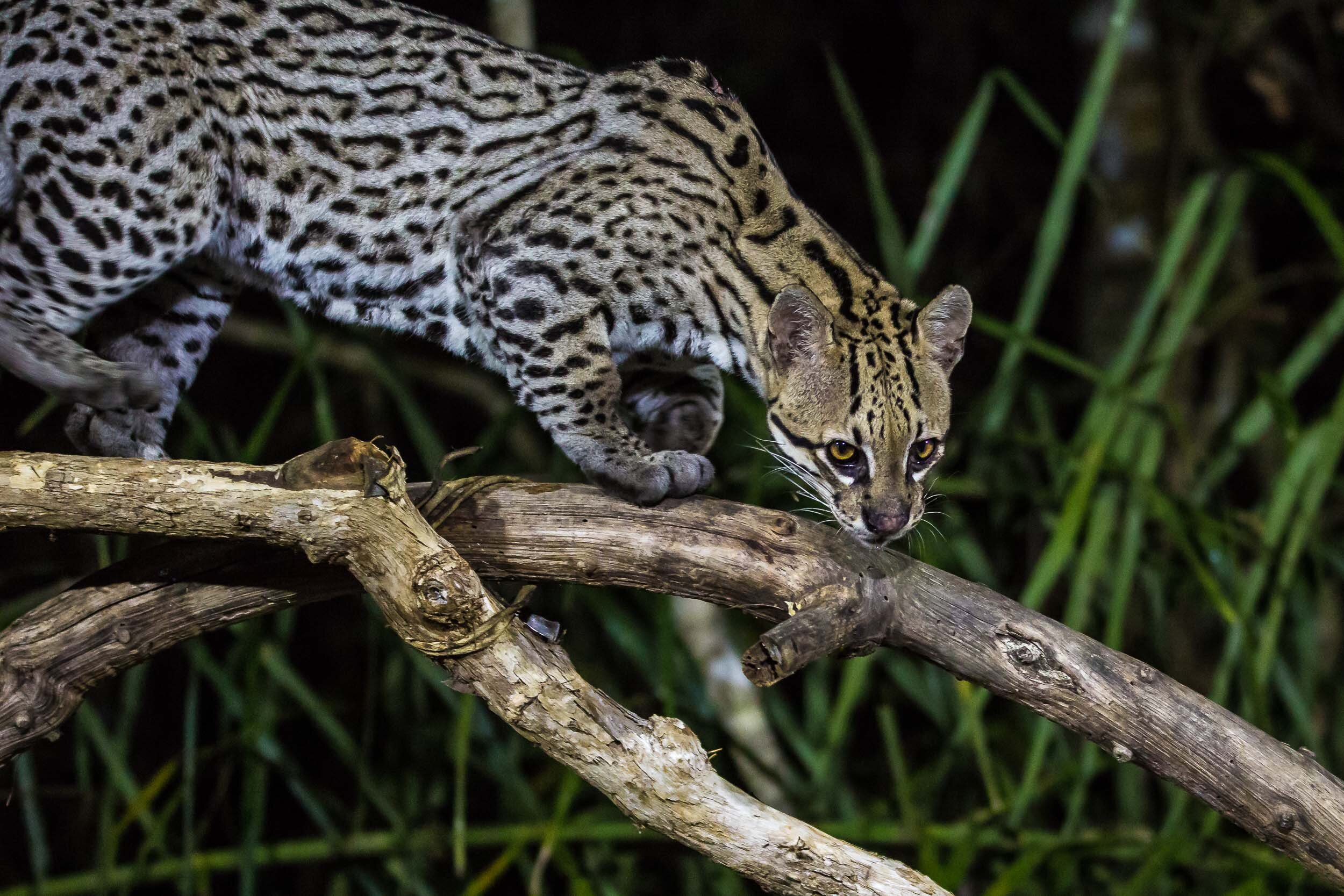
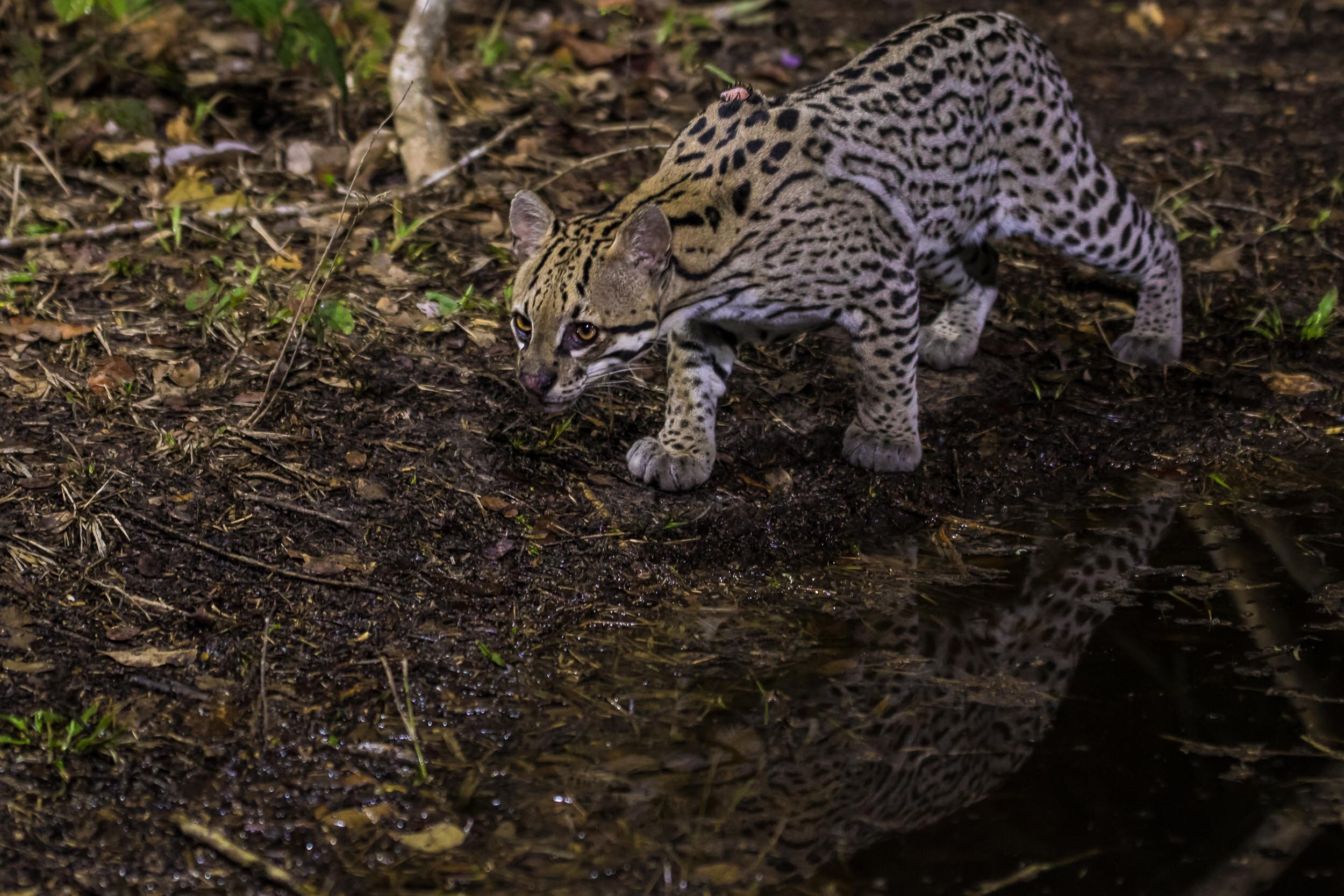
Observation Towers
In addition to the ocelot hide, there are several observation towers at SouthWild Pantanal Lodge.
Jabiru nest from the observation tower… The chicks aren’t so little any more!
The most impressive is the 12 metre tower that has been built near a giant jabiru stork nest.
Guests can climb the spiral staircase of the tower to peer into the nest, to see, at various times of the year, the stork eggs, the newly hatched storks, or the fledgling storks as they squawk and chatter and wait for the return of their parents with food.
While this is certainly exciting, and must be a sheer delight for ornithologists, photographers may be a little disappointed to find that it is almost impossible to take a good-looking photo of baby jabiru storks (you just can’t hide the fact, they are not particularly photogenic)!
There are other mobile observation towers in the forest around SouthWild Pantanal Lodge, strategically situated near the trees that are the most actively fruiting and flowering, and therefore more likely to attract the most monkeys, birds and insects. These can be accessed on the guided nature walks.
And while we honestly don’t consider ourselves ‘birders’ you can’t help but enjoy the array of colours on display, starting with the charismatic kingfisher of which there are seven varieties in The Pantanal…
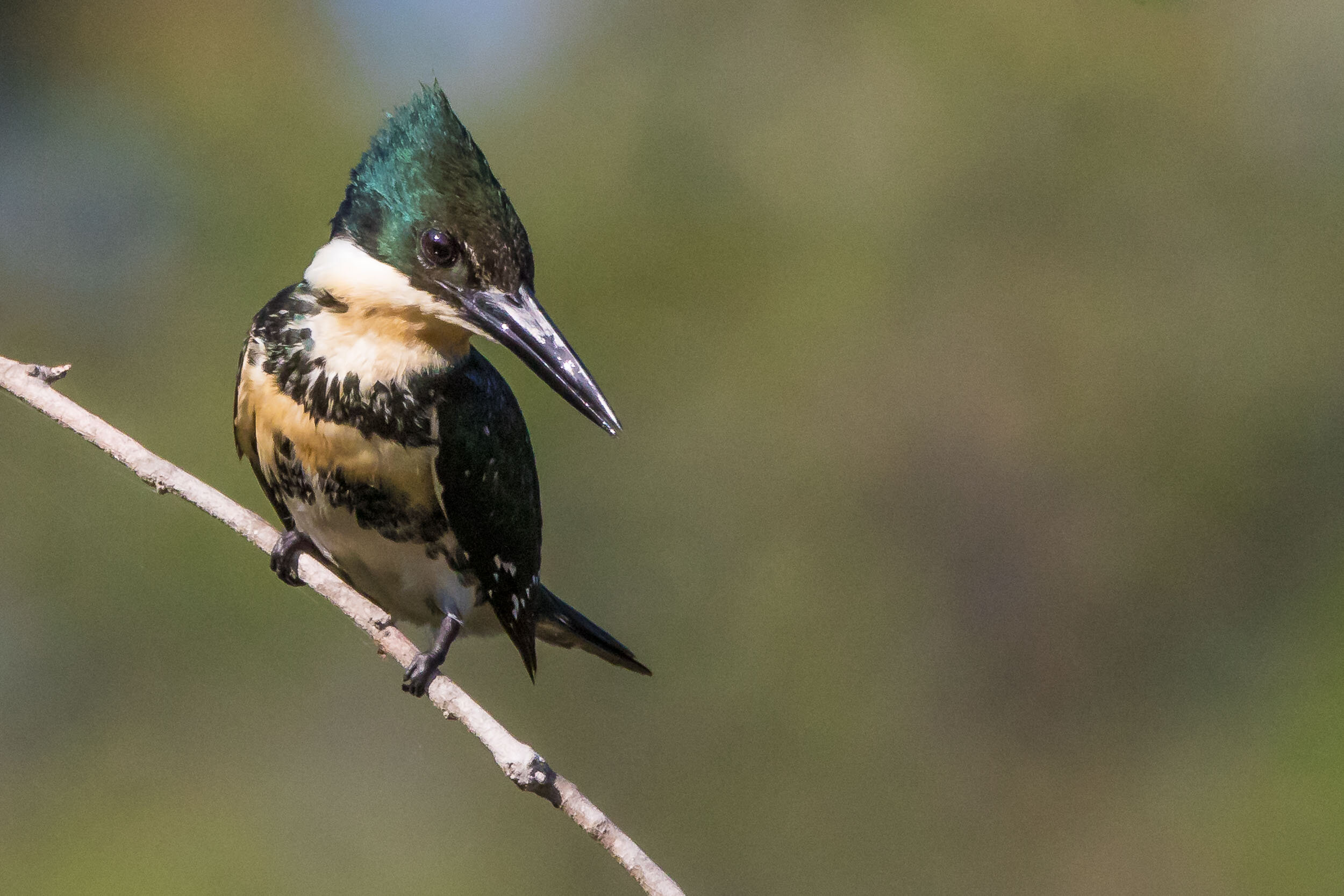

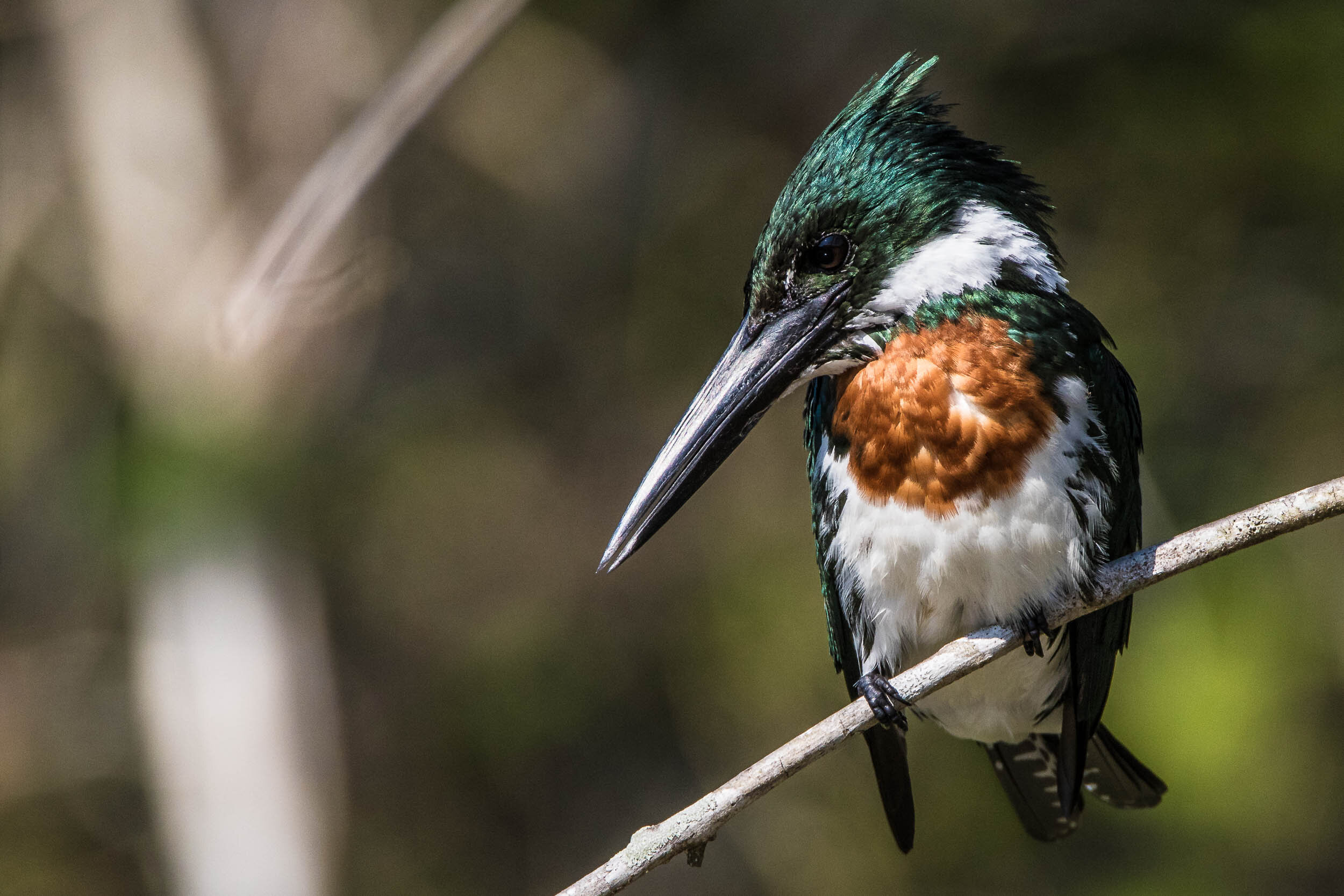
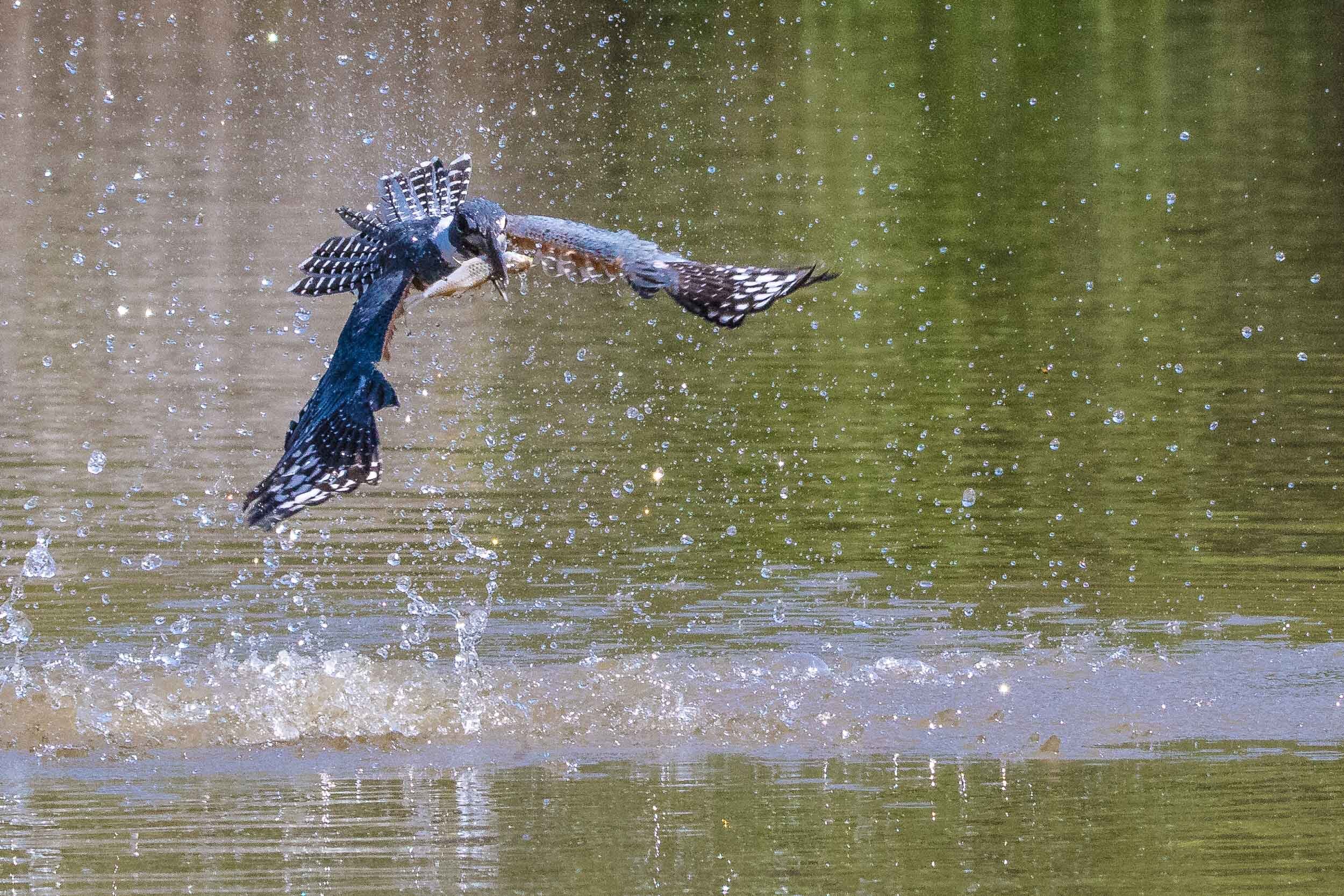
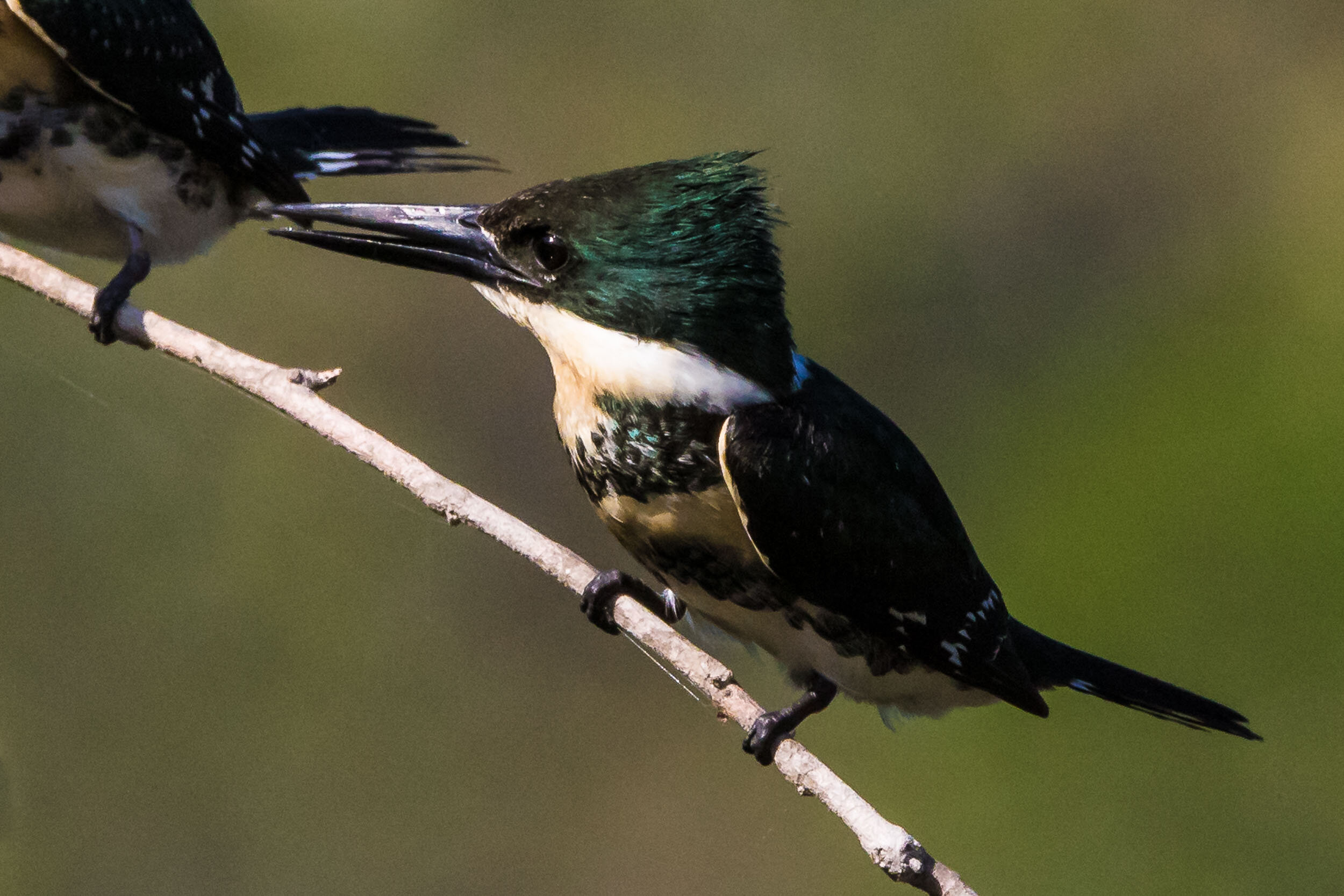
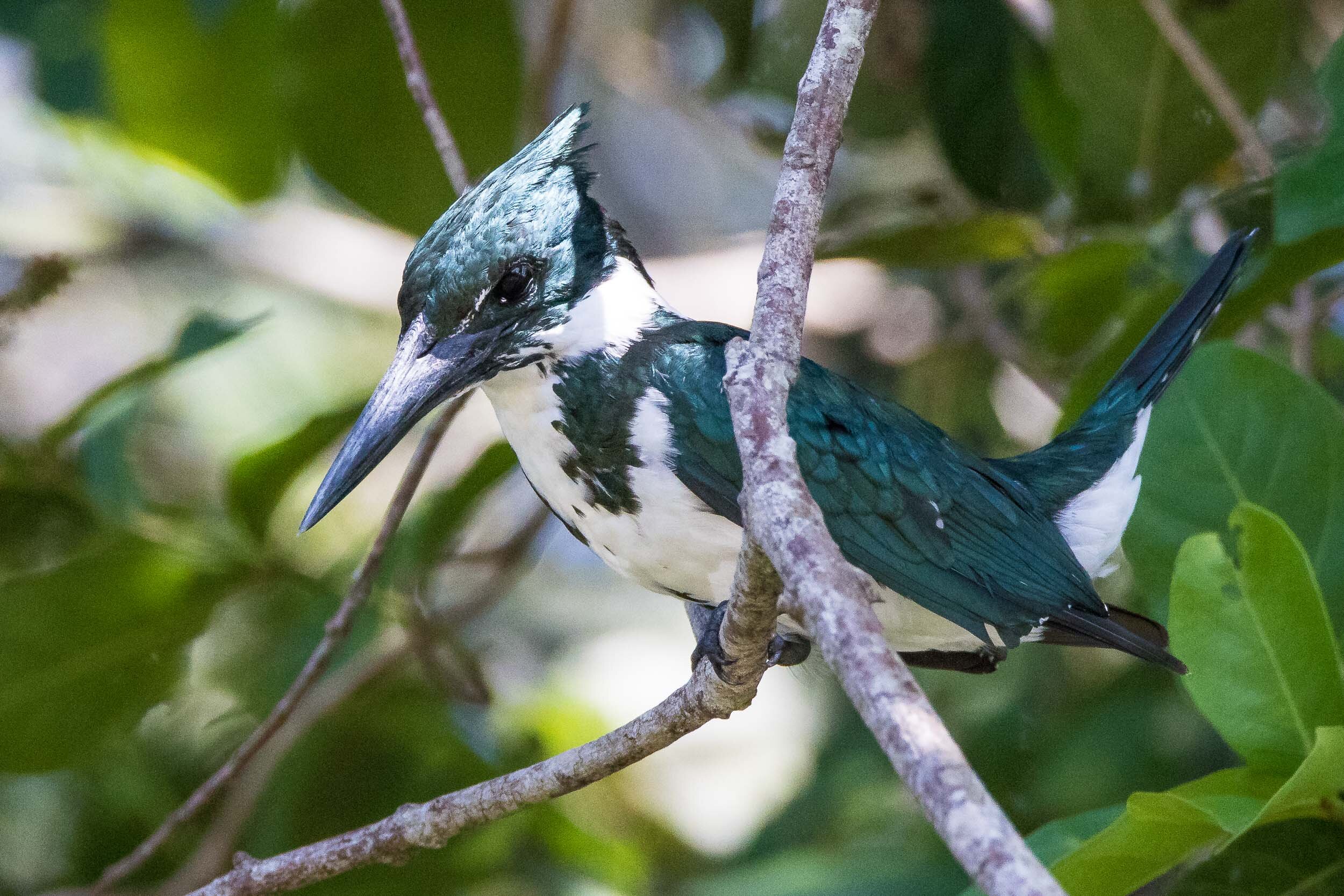
River Cruises
SouthWild Pantanal Lodge is also duly recognised for the quality of their river excursions. Morning and evening river tours are available, taking to the Pixaim River in small narrow motorboats.
The thin and slow-moving river is bordered on both sides by lush forest, containing capybara, monkeys, tapir, iguana and colourful birds, and occasional jaguar, while the river is full of caiman, waterbirds, fish and several families of giant otter.
Quietly meandering upstream, the experienced boat drivers and guides point out the wildlife, as the boat glides languidly through the beautiful scenery.
The boat drivers are also partial to throwing small baitfish into the river, to entice spectacular dives from the watching hawks, falcons and kingfishers.
Again, this is a practice that may offend some wildlife-watching purists, but it is a legacy of the river having always been home to fishermen, and we confess it is a hard to resist opportunity to capture some fantastic photographs amid the ensuing competition between the wily birds of prey.
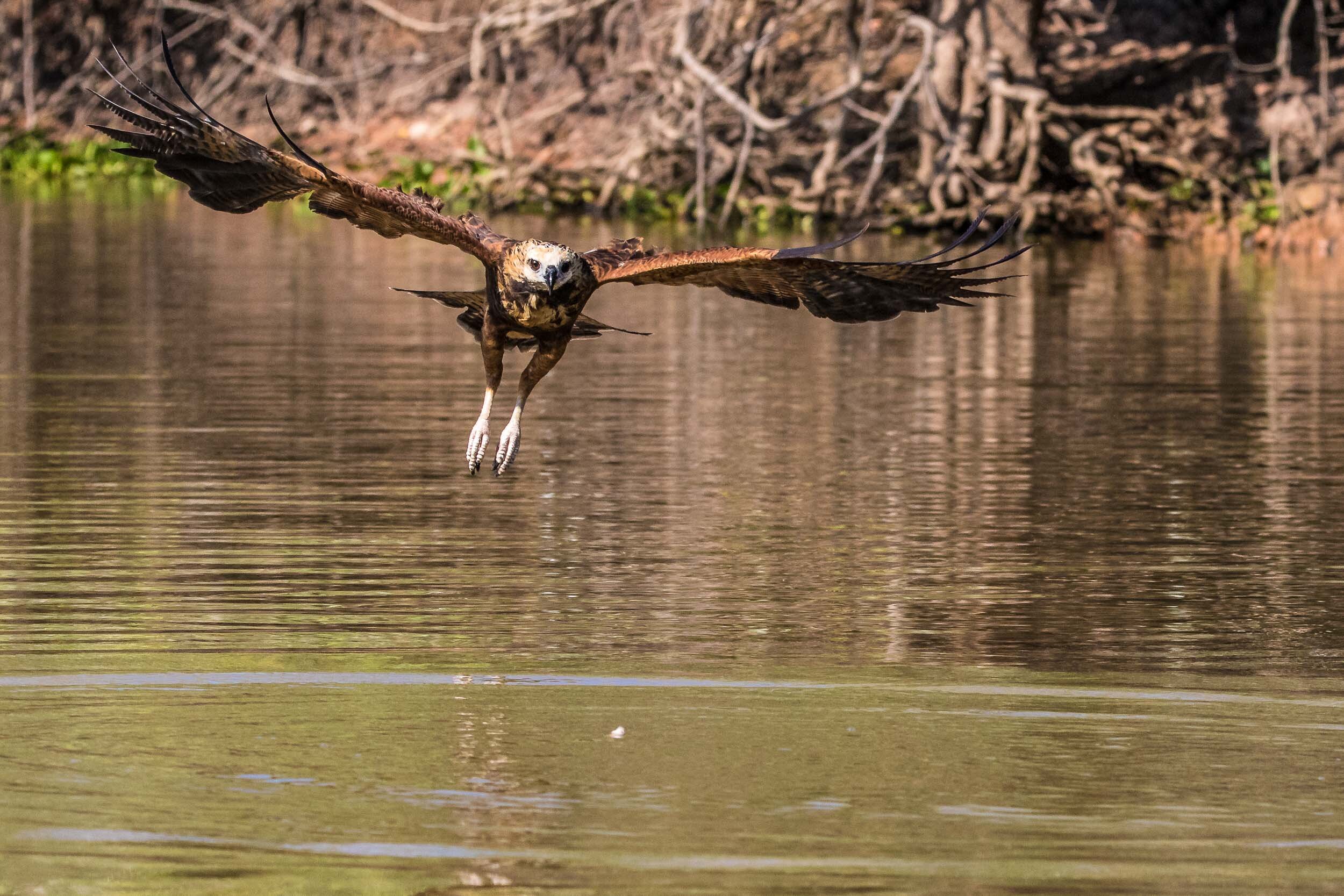
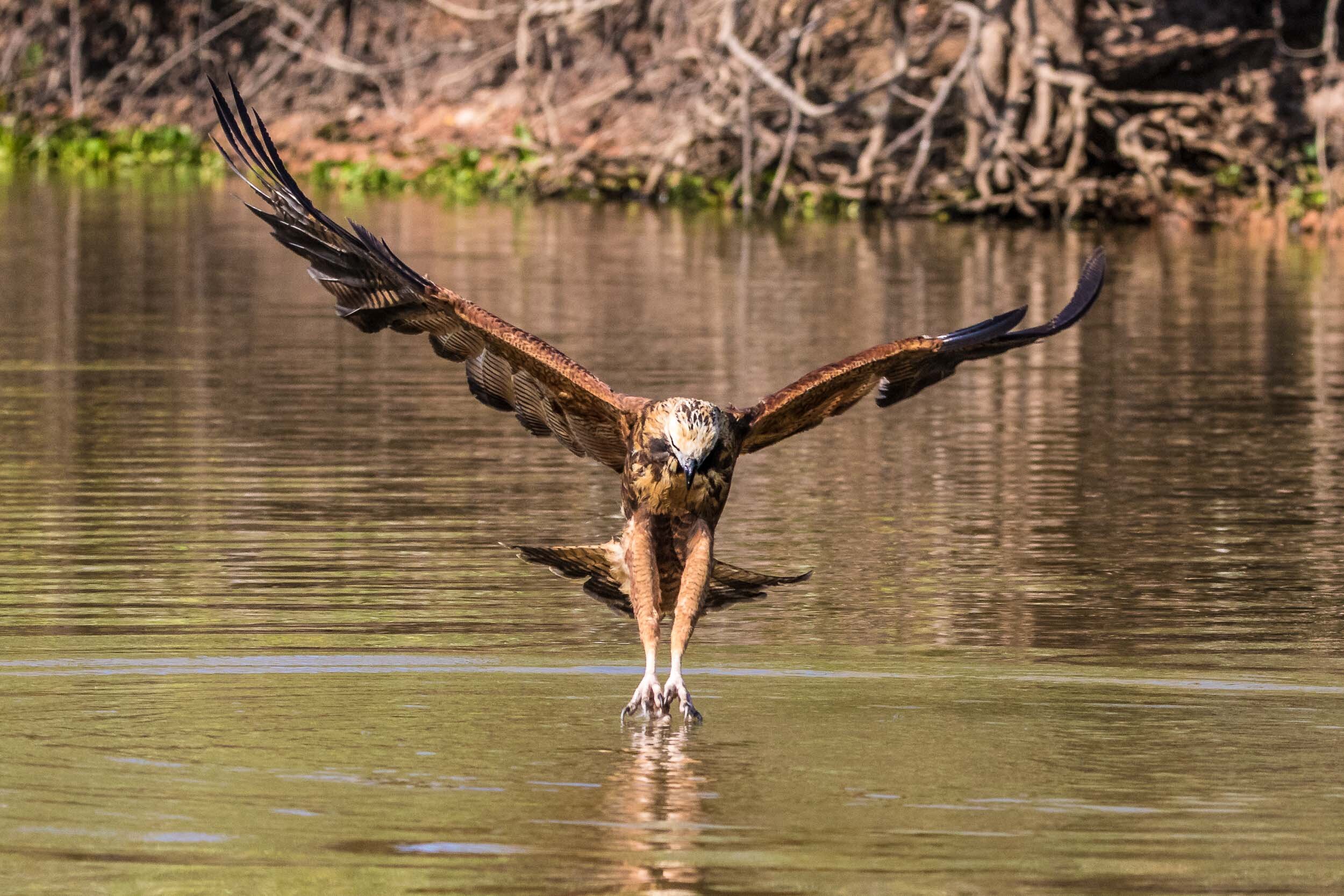
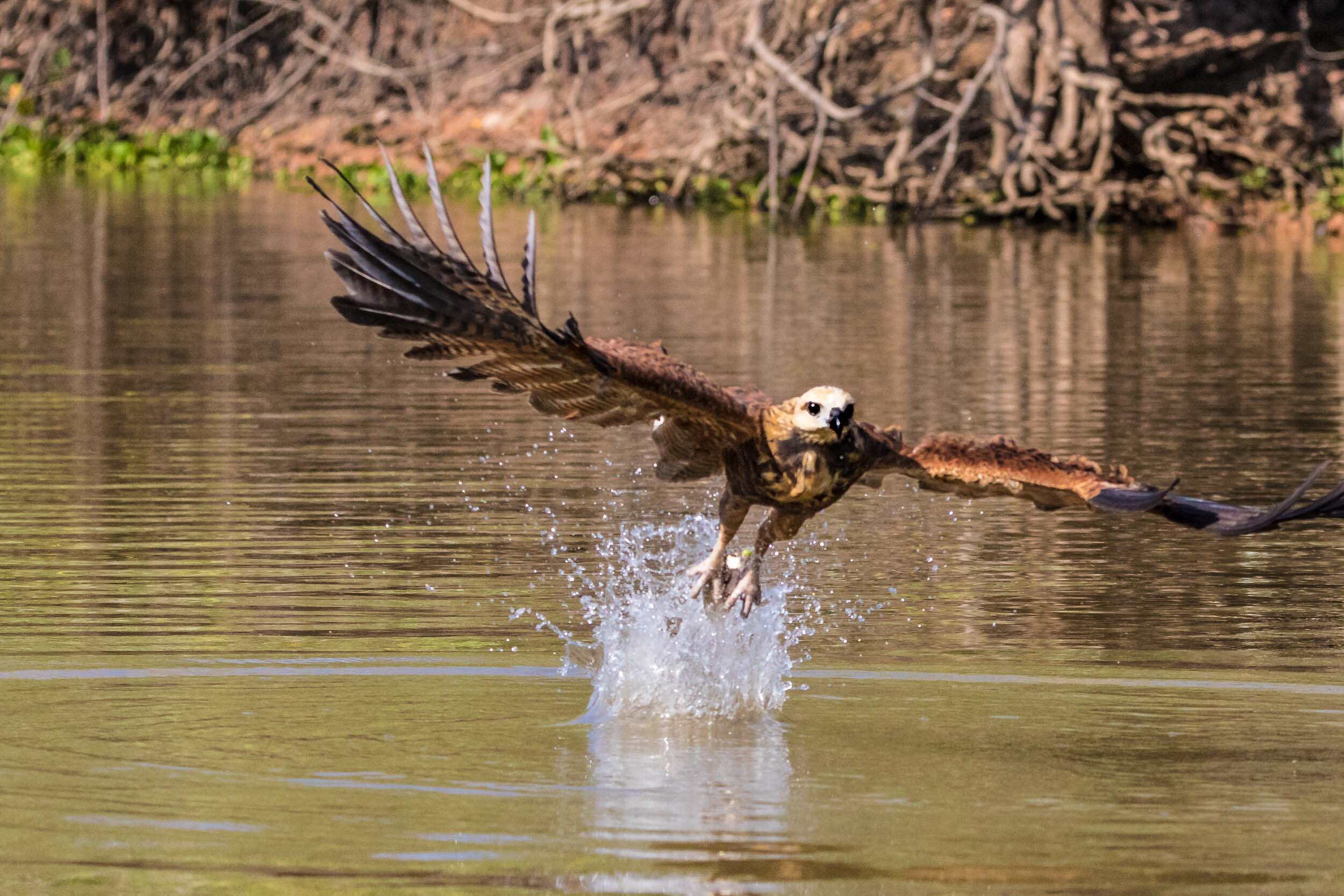
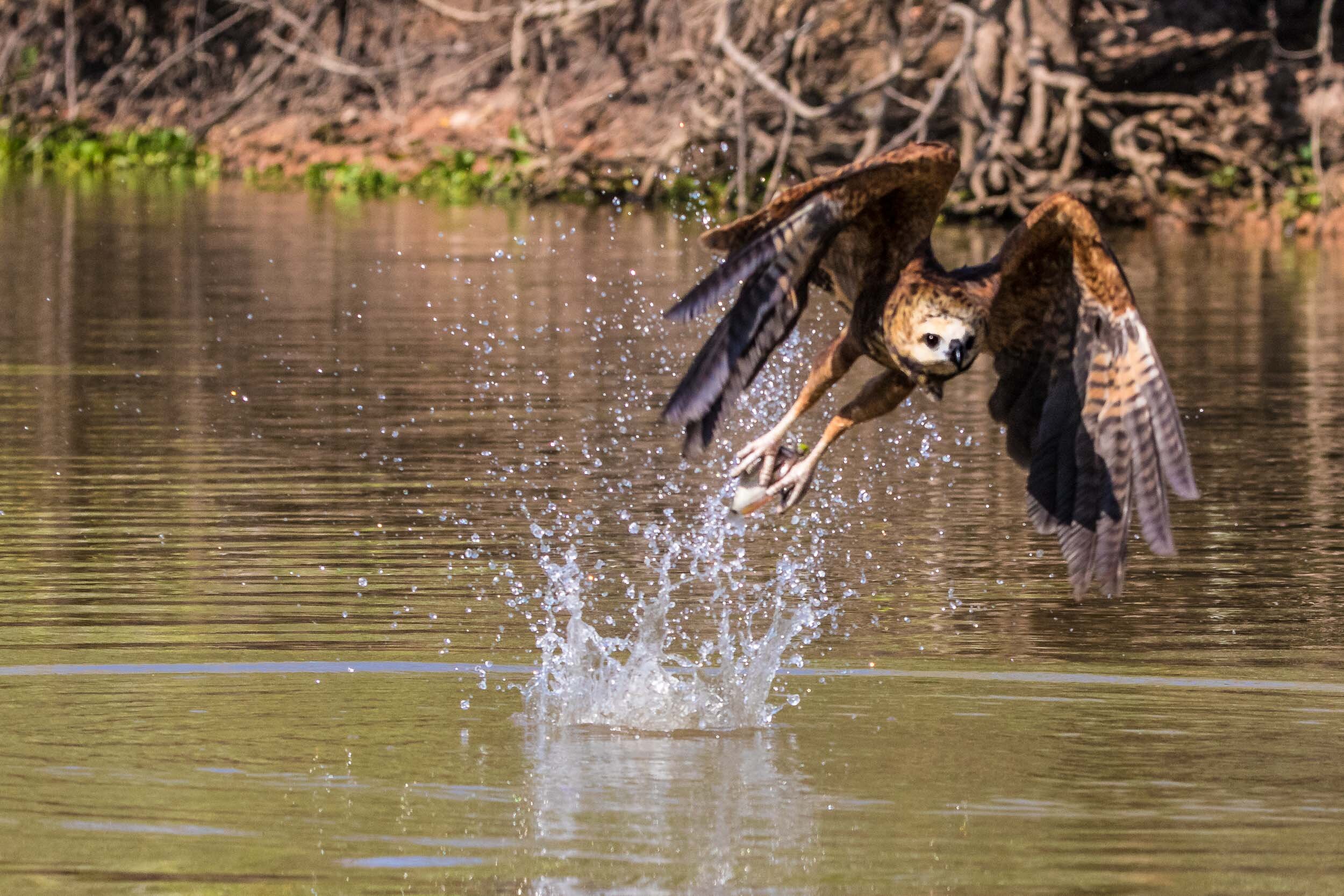
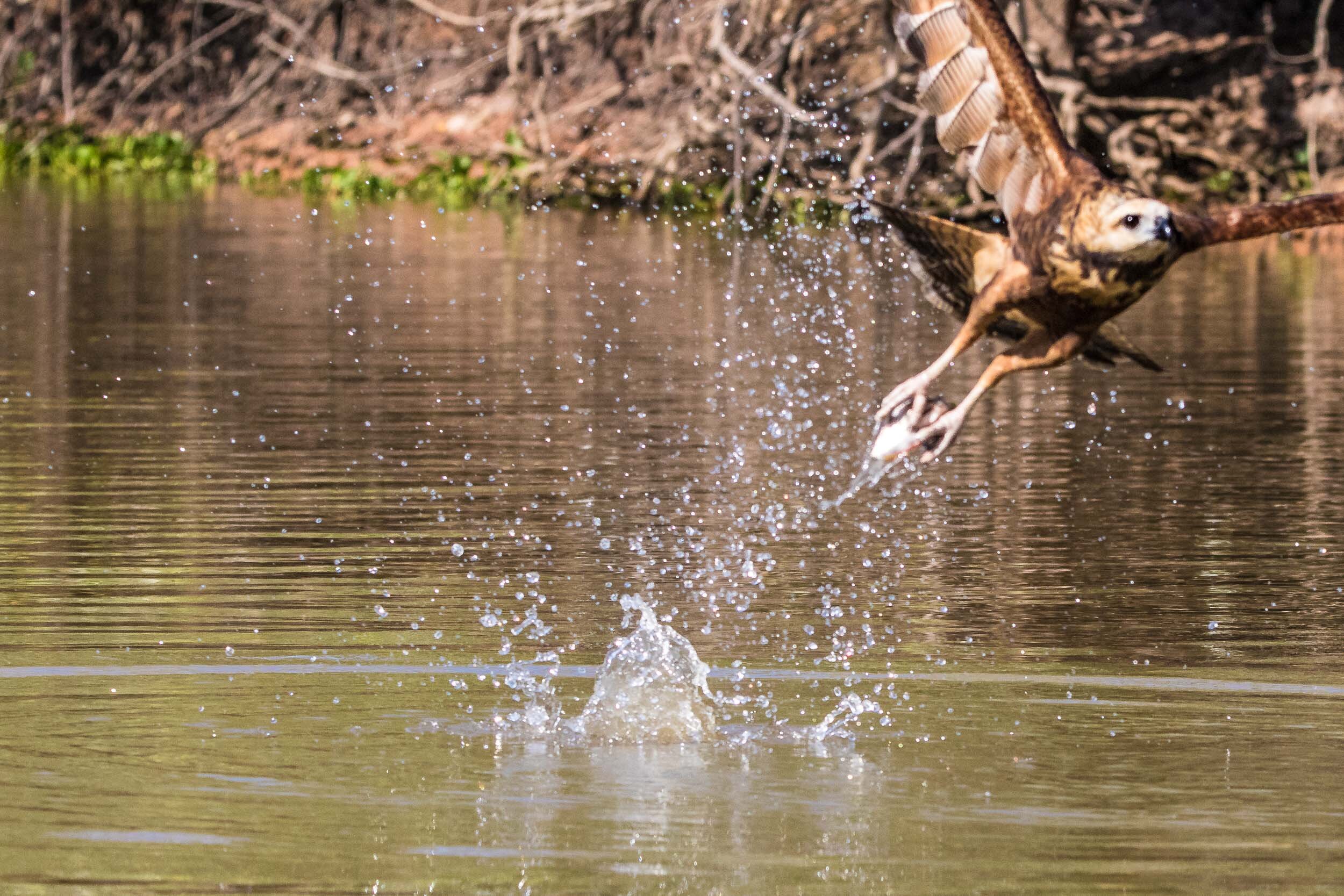
Other Activities
If staying longer at SouthWild Pantanal Lodge, it may also be possible to incorporate other activities, such as guided forest walks, truck safaris and horseback riding. In addition, the environs of the lodge are lovely, and it is very pleasant to just hang out around the hacienda, watching the birds descend onto the feeders in the morning, and the capybara as they munch on the lawn and play in the waterholes.
As suggested in Part 1 of this series, we would recommend at least a one night stay in each direction when travelling to The Pantanal. But ideally a two night stay on your way into The Pantanal gives you the best chance to see the otherwise highly elusive ocelot, and enjoy enormously colourful array of birds, before your trip becomes all about the jaguars.
